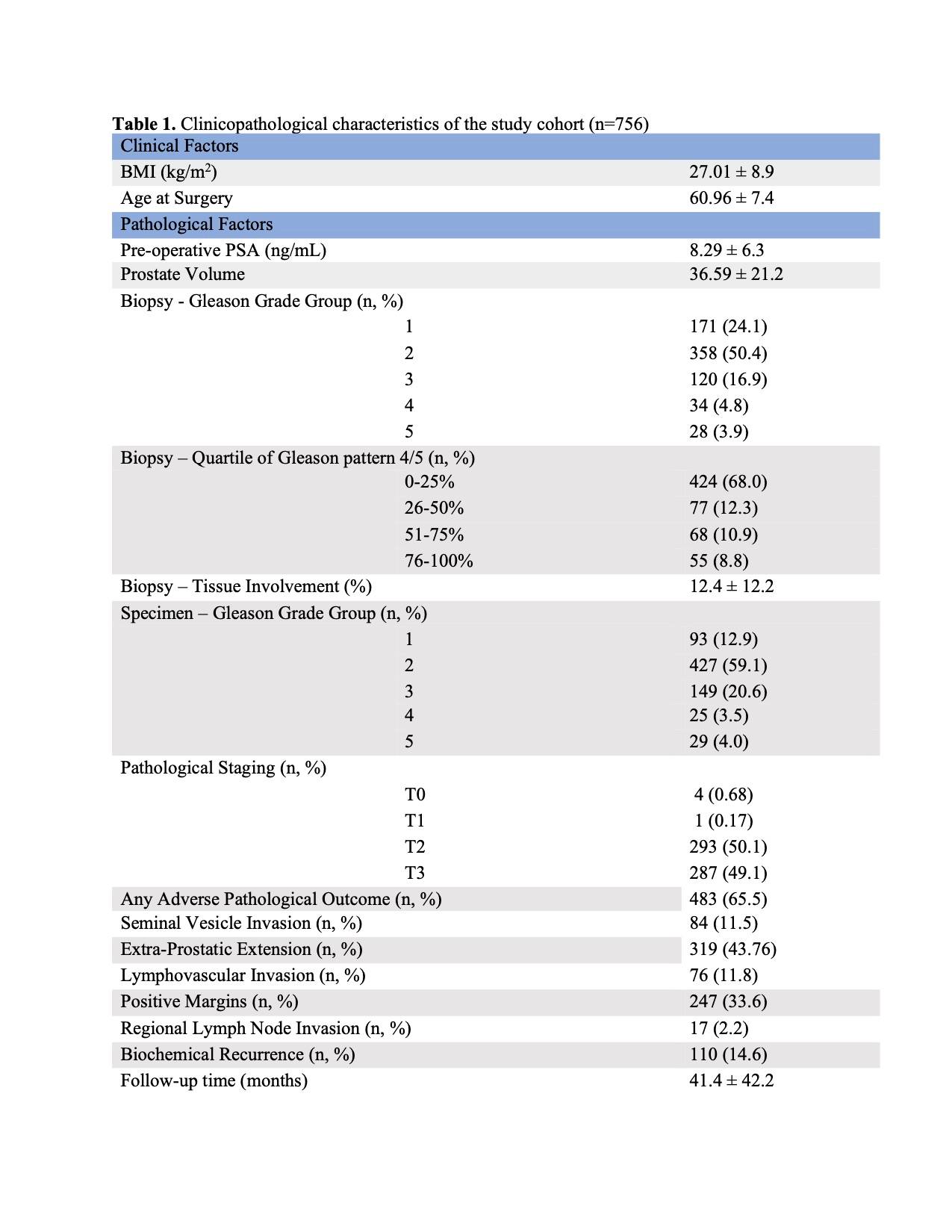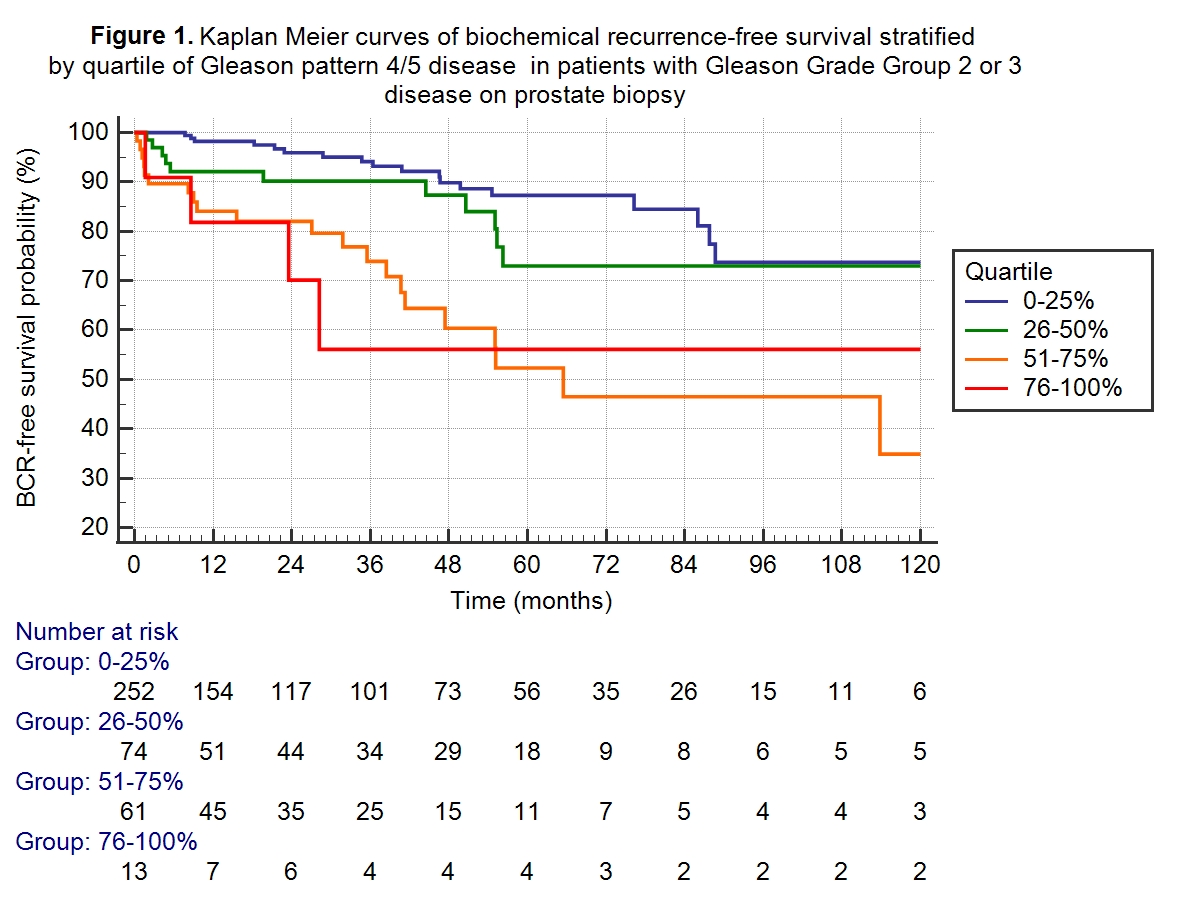Refining prognostication of pathological outcomes based on stratification of Gleason pattern 4/5 disease in patients undergoing radical prostatectomy
Jethro Kwong1, Hayley Mckee2, Adree Khondker, Adrian Cozma3, Ashkan Javidan2, Amna Ali4, Munir Jamal1, Thomas Short1, Frank Papanikolaou1, John Srigley5, Andrew Feifer1,4.
1Division of Urology, Department of Surgery, University of Toronto, Toronto, ON, Canada; 2Temerty Faculty of Medicine, University of Toronto, Toronto, ON, Canada; 3Department of Radiation Oncology, University of Toronto, Toronto, ON, Canada; 4Institute for Better Health, Trillium Health Partners, Mississauga, ON, Canada; 5Department of Laboratory Medicine and Pathobiology, University of Toronto, Toronto, ON, Canada; 6Division of Urology, The Hospital for Sick Children, Toronto, ON, Canada
Introduction: The utility of the percentage of Gleason pattern 4/5 disease (% 4/5) on the prognosis of surgically treated men with prostate cancer is debated. We sought to explore how different strata of % 4/5 could optimally predict risk of adverse pathological outcomes (APO) and biochemical recurrence (BCR) in patients undergoing radical prostatectomy (RP).
Methods: Patients who underwent RP between Jan 2000 and Aug 2021 at our institution were reviewed. Clinicopathological variables including age, BMI, PSA, Gleason Grade Group (GGG), % positive cores, and % 4/5 were used in logistic regression models to assess the probability of an APO (defined as upstaging in GGG from biopsy, extraprostatic extension, seminal vesicle invasion, regional lymph node involvement, lymphovascular invasion, or positive surgical margins). These predictors and APOs were used to build a Cox proportional hazards model to determine the probability of BCR. % 4/5 disease at the case level was stratified by quantitative percent, tertile, quartile, and decile, and each examined for association with APO and BCR.
Results: A total of 756 men were included (Table 1). Mean follow-up time was 41.4 months. Approximately 66 and 15% of patients had an APO and BCR, respectively. There was strong agreement between biopsy and specimen GGG (R=0.72), however, 9 and 22% of patients were under-staged and over-staged from initial biopsy, respectively. Stratification of % 4/5 disease by quartile was found to be significantly associated with all APOs on multivariable analysis, with the exception of positive surgical margins. For patients with GGG 2 or 3 disease on biopsy, higher quartile of % 4/5 disease was associated with reduced BCR-free survival (p<0.001, Figure 1).
Conclusions: Percentage of Gleason pattern 4/5 disease may have independent and clinically significant prognostic value. Stratification by quartiles appears to have an optimal balance between ease-of-use and prognostication of APOs and BCR.

